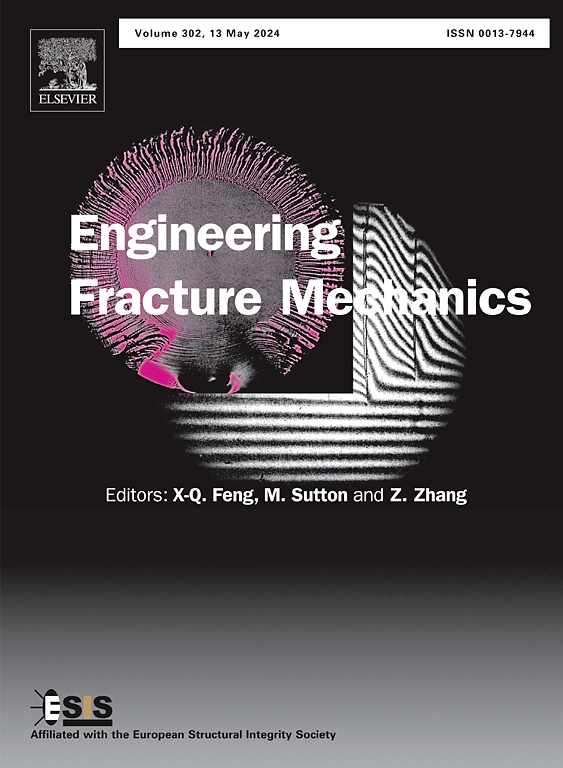A 2D continuous-discontinuous heat transport model considering thermal cracking for the combined finite-discrete element method (FDEM) using node binding scheme
IF 4.7
2区 工程技术
Q1 MECHANICS
引用次数: 0
Abstract
Within the framework of the combined finite-discrete element method (FDEM) employing cohesive elements, we propose a novel thermo-mechanical coupling model to simulate heat transport in fractured rock masses (i.e., heat conduction, heat transfer and heat exchange) and capture the initiation and propagation of thermal cracking. Instead of using a fictitious heat exchange coefficient for cohesive elements as those in previous work, in this model, we adopt a node binding scheme to ensure the continuity of heat conduction in the intact/continuous rock matrix domain prior to fracturing. The computational efficiency of heat conduction using the proposed approach is significantly improved ∼ 110 times (about 2560 triangle elements contained in a model), and the extra numerical parameter (i.e., the heat exchange coefficient of cohesive element) commonly used in the conventional FDEM is not required. To accommodate the finite strain theory implemented in FDEM for large deformations and rotations, we also employ the multiplicative decomposition of deformation gradient to calculate the thermal stress. We conduct a suite of numerical benchmarks to verify the effectiveness and robustness of the thermo-mechanical coupling model in terms of heat conduction, thermal cracking and heat transfer. As an application, a typical example is performed to uncover the underlying mechanism of thermal cracking induced by different temperatures and investigate the micro-fracturing of brittle crystalline rocks. The coupled thermo-mechanical coupling model may help enhance the applicability and accuracy of FDEM for deep energy exploitation.
基于节点绑定格式的有限-离散元联合法(FDEM)考虑热裂的二维连续-非连续热传递模型
在采用内聚元的有限-离散元联合方法(FDEM)框架内,我们提出了一种新的热-力学耦合模型来模拟裂隙岩体中的热传递(即热传导、传热和换热),并捕捉热裂纹的发生和扩展。在该模型中,我们采用节点绑定方案,以确保压裂前在完整/连续岩石基质域中导热的连续性,而不是像以前的工作那样对粘性元素使用虚构的换热系数。采用该方法的热传导计算效率显著提高~ 110倍(模型中包含约2560个三角形单元),并且不需要传统FDEM中常用的额外数值参数(即内聚单元的换热系数)。为了适应FDEM中实现的大变形和旋转的有限应变理论,我们还采用变形梯度的乘法分解来计算热应力。我们进行了一套数值基准测试,以验证热传导、热裂和传热方面的热-力耦合模型的有效性和鲁棒性。作为应用,通过典型算例揭示不同温度诱发热裂的潜在机理,研究脆性结晶岩的微破裂。建立的热-力耦合模型有助于提高FDEM在深部能源开采中的适用性和精度。
本文章由计算机程序翻译,如有差异,请以英文原文为准。
求助全文
约1分钟内获得全文
求助全文
来源期刊
CiteScore
8.70
自引率
13.00%
发文量
606
审稿时长
74 days
期刊介绍:
EFM covers a broad range of topics in fracture mechanics to be of interest and use to both researchers and practitioners. Contributions are welcome which address the fracture behavior of conventional engineering material systems as well as newly emerging material systems. Contributions on developments in the areas of mechanics and materials science strongly related to fracture mechanics are also welcome. Papers on fatigue are welcome if they treat the fatigue process using the methods of fracture mechanics.

 求助内容:
求助内容: 应助结果提醒方式:
应助结果提醒方式:


